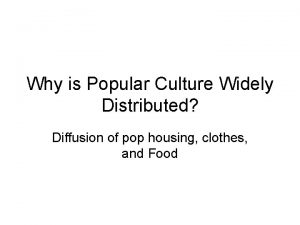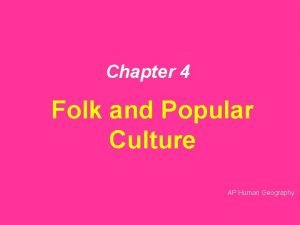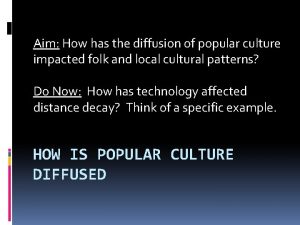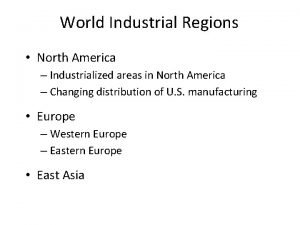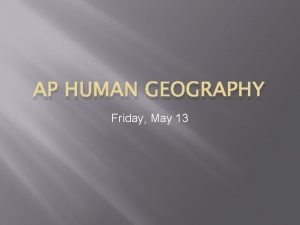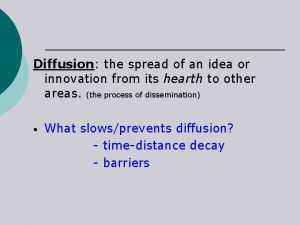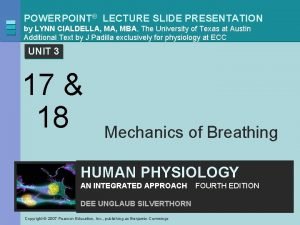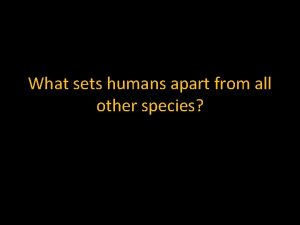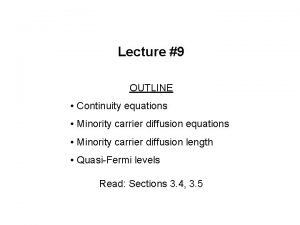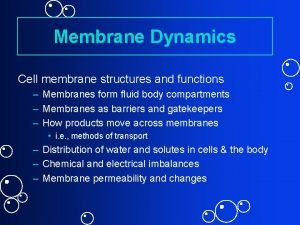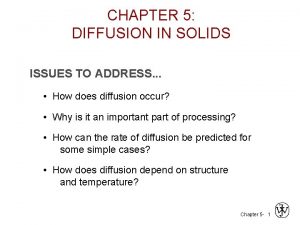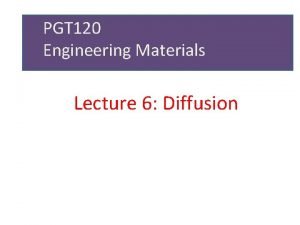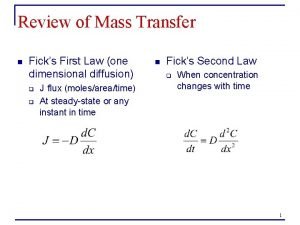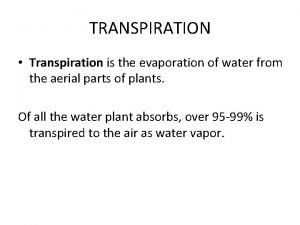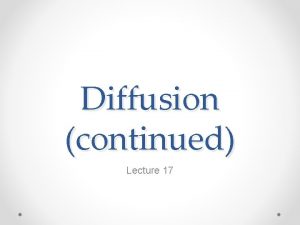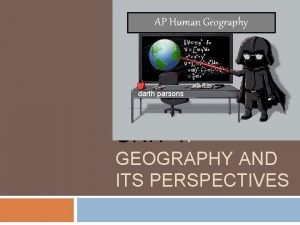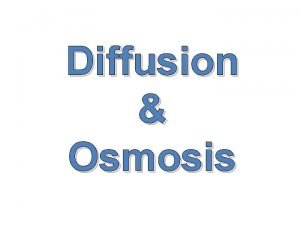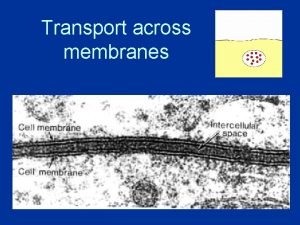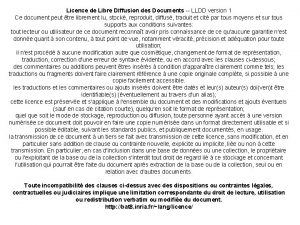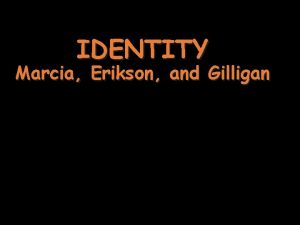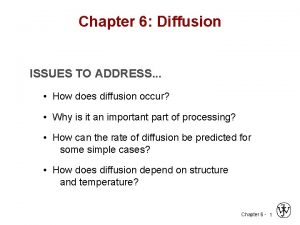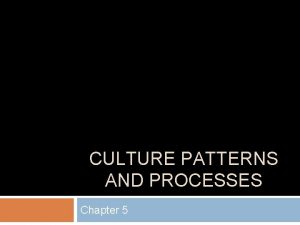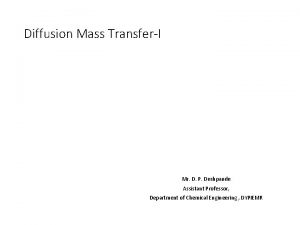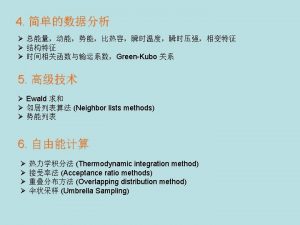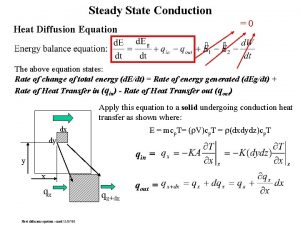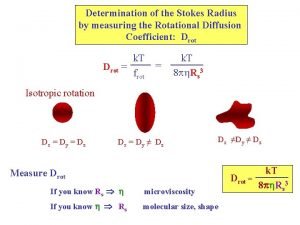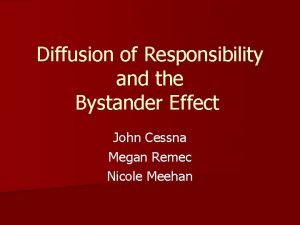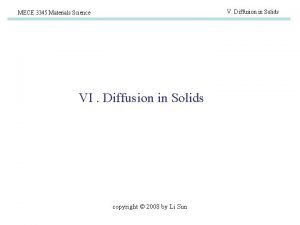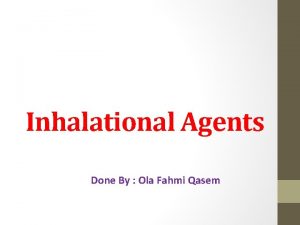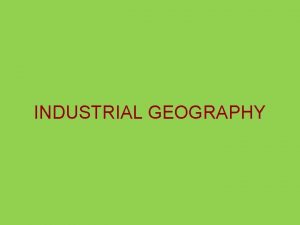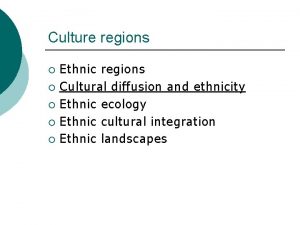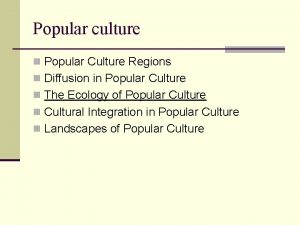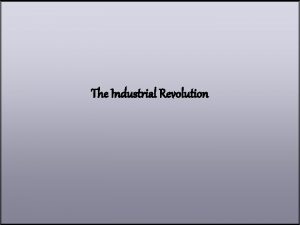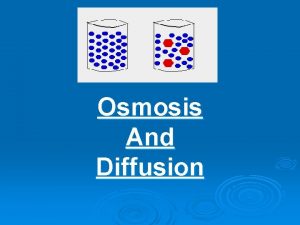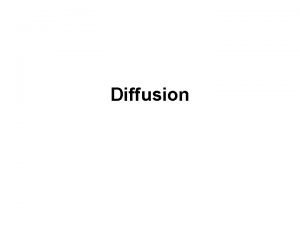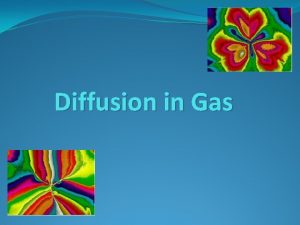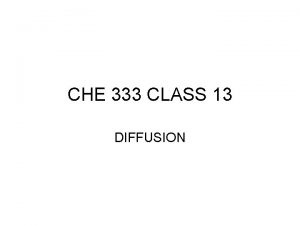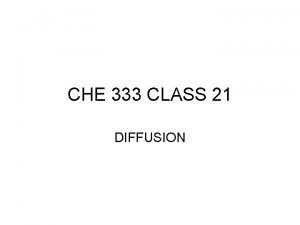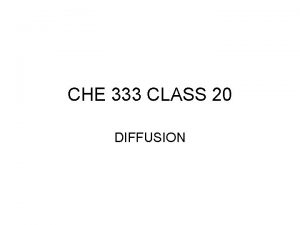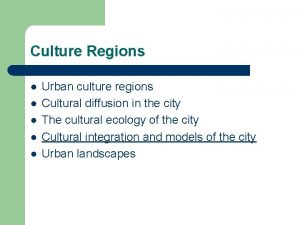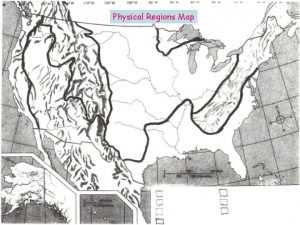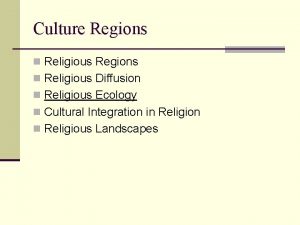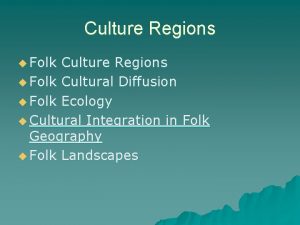Culture Regions n n n Industrial Regions Diffusion















































































- Slides: 79

Culture Regions n n n Industrial Regions Diffusion of the Industrial Revolution Industrial Ecology Industrial Cultural Integration Industrial Landscapes

Renewable resource crises n Primary industries can be particularly destructive q q n Gouge huge open-pit mines Endanger renewable resources such as forest and fisheries Deforestation is an ongoing process that began at least 3000 years ago q q In the last half-century, a third of the world’s forest cover has been lost Lumber use tripled between 1950 and 1998

Renewable resource crises n Loss of the tropical rain forest q Occurring in both Eastern and Western Hemispheres


Renewable resource crises n Loss of the tropical rain forest q q Most intensive clearing is in the East Indies and Brazil, and commercial lumber interests are largely responsible) Canadians and Americans can only hypocritically chastise other countries since their own west coast mid-latitude rain forests continue to suffer severe damage because of lumbering Foreign rather than Brazilian interests now hold logging right to nearly 30 million acres of Amazonian rain forest Even forests converted to scientifically managed “tree farms” destroys natural ecosystems


Renewable resource crises n Overfishing q q A problem compounded by pollution Total fish catch of all countries combined rose from 84 million metric tons in 1984 to 110 million a decade later causing some species to decline n n q q Salmon in Pacific coastal North America Cod in Maritime Provinces of Canada have reached a biological crisis Caused a catastrophic recession in the Newfoundland cod industry Some experts forecast a collapse of the world fisheries in the near future

Acid rain n n Can be produced by secondary and tertiary industries that pollute air, water, and land with toxic substances and other chemicals Known to researchers for 150 years Gained widespread publicity beginning in the early 1980 s How it is created by the burning of fossil fuels by power plants, factories, and automobiles q Acidic sulfur oxides and nitrogen oxides are released into the air q These chemicals are flushed from the atmosphere by precipitation q Resultant rainfall has a much higher than normal acidity q A shower that fell on Kane, in northern Pennsylvania in 1978 had a p. H reading equivalent to vinegar


Acid rain n In today’s world, 84 percent of energy is generated by burning fossil fuels Acid rain is capable of poisoning fish, damaging plants, and diminishing soil fertility This problem has been intensively studied in Germany, one of the world’s most completely industrialized nations q q q In 1982 only 8 percent of forests in western Germany showed damage By 1990 over half the forests showed damage Only a crash program of pollution control and energy conservation can now save Germany’s woodlands


Acid rain n n The Czech Republic faces a comparable problem In North America the effects of acid rain are accumulating q q Over 90 lakes in the Adirondack Mountains of New York were devoid of fish life by 1980 In eastern Canada, 50, 000 lakes face a similar fate Recent studies suggest acid rain now causes mass killings of marine life along the northeastern coast of the United States and forests in the Appalachians Oxides of nitrogen seem to be the principal culprit in coastal waters n n Impact has been noted in Chesapeake, Delaware, and Narragansett bays Long Island Sound is also feeling the effects

Industrial Pollution: British Columbia, Canada

Industrial Pollution: British Columbia, Canada n While emissions from pulp and paper mills are degradable, the foulsmelling sulfur compounds will be broken down only very slowly by plants and microorganisms. Meanwhile they pollute both air and water.

Industrial Pollution: British Columbia, Canada n n Lumbering contributes to deforestation, and since sulfur oxides contribute to acid rain, this forestryrelated manufacturing process also contributes to deforestation. Mid-latitude coasts are especially vulnerable since acid rain has severe effects on the windward slopes covered with clouds and fogs.


Acid rain n Much of the pollution in Canada is caused by American pollution q q Canadian government has asked the United States to take action in stopping pollution United States government has not confronted the problem

The Greenhouse effect and ozone depletion n Greenhouse effect is also produced by the burning of fossil fuels q q Brings possibility of catastrophic change to Earth’s climate Every year billions of tons of carbon dioxide (C 02) are produced worldwide, 50 times that produced in 1860 Destruction of rain forests adds huge additional amounts of CO 2 to the atmosphere Chemical composition of the air is being altered


The Greenhouse effect and ozone depletion n Greenhouse effect is also produced by the burning of fossil fuels q Carbon dioxide is only one of the absorbing gases involved in the greenhouse effect n n n q Permits solar shortwave heat radiation to reach Earth’s surface Acts to block or trap long-wave outgoing radiation Causes a thermal imbalance and global heating The result at worst, could be a runaway buildup of solar heat that would evaporate all water and make any form of life impossible

The Greenhouse effect and ozone depletion n Greenhouse effect is also produced by the burning of fossil fuels q A lesser result could warm the global climate only enough to melt or partially melt the polar icecaps n n q q q Cause sea levels to rise as much as hundreds of feet Inundate the world’s coastlines Worst-case scenario for the year 2030 seems to include a climatic warming to the level known 4 million years ago The year 1997 was the warmest year ever recorded The decade of the 1987 to 1997 also experienced the highest average temperatures in history for a 10 -year span

The Greenhouse effect and ozone depletion n Greenhouse effect is also produced by the burning of fossil fuels q q Onset could be sudden, as some critical, unknown threshold is reached in atmospheric carbon dioxide Doomsday is possibly being delayed by another industrialrelated environmental alteration n n q Addition of huge amounts of particulate pollutants to the atmosphere Such pollution acts to block out solar radiation and cool climate Greenhouse effect and particulate pollution may have acted to neutralize each other

The Greenhouse effect and ozone depletion n Some researchers deny we are experiencing global warming q q n We lack good weather records for all but the recent past If the climate is becoming warmer, the causes cannot conclusively be determined at this time Many experts believe the greenhouse effect will be accompanied by major changes in precipitation q q q Some climatic models predict global warming would make the tropics drier Also predict the middle and higher latitudes would be wetter Violent weather may also increase, and evidence suggests this may already be occurring


The Greenhouse effect and ozone depletion n Potentially more serious is the depletion of the upper-atmosphere ozone layer q q q Acts to shield all forms of life from the most harmful types of solar radiation Freon used in refrigeration and air conditioning is a major culprit Most industrialized countries contribute large amounts of chemicals contributing to the problem


The Greenhouse effect and ozone depletion n Potentially more serious is the depletion of the upper -atmosphere ozone layer q q n Recent research suggests the problem may be worse than believed In 1995, ozone levels in the Arctic high latitudes fell by onethird Ozone hole was first detected over the Antarctic during the 1980 s Greenpeace, and other organizations, warn ozone depletion now threatens the future of all forms of life on Earth Our modern industrial way of life may prove a maladaptive strategy in terms of cultural ecology

Radioactive pollution n n Potentially the most serious, though invisible Catastrophe at Chenobyl in Ukraine on April 26, 1986 q q All lands within a 18 -mile radius of destroyed reactor were evacuated and remain uninhabited today Sizable swaths across Europe were bombarded with different kinds of radioactive isotopes n Cesium-137 has a half-life of 30 years attacks entire human body


Radioactive pollution q Sizable swaths across Europe were bombarded with different kinds of radioactive isotopes n n Iodine-131 with a half-life of 8. 1 days collects in the thyroid gland Some estimates place amounts of cesium-137 released as equivalent to at least 750 Hiroshima atomic bombs Ultimately, a sizable part of both Ukraine and Belarus may be declared unfit for human habitation Tens of thousands of people could die from exposure to radiation caused by this single catastrophe

Radioactive pollution n n The term “national sacrifice area” is now heard in governmental circles as a potential euphemism for districts rendered permanently uninhabitable by radiation pollution Mark Corson speaks of “hazardcapes” to describe such places

The “Greens” n n n Pollution crises such as oil spills have led people to political activism People who have become so distressed by industrially caused environmental problems they have become activists, or Greens In Europe, “green” political parties now exist in countries such as Germany


The “Greens” n n Publication of the Green Index is one reflection of increased concern in North America Organizations such as the Sierra Club and Greenpeace operate as political lobbyists for environmental causes


Culture Regions n n n Industrial Regions Diffusion of the Industrial Revolution Industrial Ecology Industrial Cultural Integration Industrial Landscapes

Labor supply n Labor-intensive industries — those for which labor costs form a large part of total production costs q q Include industries depending on skilled workers producing small objects of high value — computers, cameras, and watches Manufacturers consider several characteristics of labor in deciding where to locate n n n Availability of workers with necessary skills Average wages Worker productivity

Labor supply n Labor-intensive industries — those for which labor costs form a large part of total production costs q In recent decades, increasing mobility of labor throughout the Western world has lessened locational influence of labor n n n Migration of labor increased after 1950, in Europe and U. S. In Europe, large numbers of workers migrated south to north Workers left homes in Spain, Italy, Greece, Turkey, and Balkan states for employment in European manufacturing belt

Labor supply n Labor-intensive industries — those for which labor costs form a large part of total production costs q High-tech and “information industries” often locate near major research universities n n Offer a source of skilled innovative laborers Offer an attractive intellectual setting in which to live

Labor supply n Labor-intensive industries — those for which labor costs form a large part of total production costs q Industries dependent on largely unskilled labor tend to relocate to economically depressed rural areas n n n Labor can be trained quickly and cheaply Can result in higher profits Large supply of cheap labor

Labor supply n Labor-intensive industries — those for which labor costs form a large part of total production costs q q Much industry went to “Norma Rae-Ville” in American South for above reasons Today, principal relocations go to less-developed countries such as northern Mexico, along its border with the United States


Labor supply n A new global division of labor seems to be in the works q q Behind these changes lies strategic thinking by directors of global corporations As early as the mid-1970 s, 298 American-based global corporations employed up to 25 percent of their workers outside the United States Such factories quickly drive up corporate profit margins Shift of production to faraway lands has a weakening effect on organized labor inside the United States

Markets n Type of market being served can affect location of industries q q q Makers of farm machinery cater to a more dispersed body of consumers, giving them a greater freedom of choice in location Specialized high-tech manufacturers often have one or two principal customers and tend to locate near this market Clustering in cities pulls manufacturers to urban centers

Markets n n Greatest market potential exists where the largest numbers of people live Once an industry locates in a particular place, it provides additional jobs and attracts laborers to the area q q q Additional population in turn creates a larger local market Other industries are then attracted to the area An agglomeration is then created as the end result

Markets n Industrial districts develop through agglomeration q q q n Creates a snowballing effect Difficult to control in free-enterprise systems Can produce serious overcrowding and an excessively clustered population Intense concentration of industries and population is characteristic of most industrialized nations

The political element n Governments often intervene directly in decisions concerning industrial location q q Desire to establish strategic, militarily important industries that would otherwise not develop Decrease vulnerability to attack by scattering industry Place vital strategic industries in remote locations, removed from possible war zones Diversifying industries to create self-sufficiency

The political element n Governments often intervene directly in decisions concerning industrial location q q Bring industrial development and higher standard of living to poverty- stricken provinces Halt agglomeration effect in existing industrial areas Most Often governments intervene in certain socialist countries, such as China Some intervention can be found in most every industrial nation

The political element n Examples of industry being scattered by governments q q q Major industrial complex in the Ural Mountains deep inside Russia was in response to German military advance in 1941 For strategic reasons, the U. S. government during WW II encouraged development of an iron and steel industry in Utah American aircraft similarly became dispersed by government policy

The political element n Local and state governments often directly influence industrial location q q Grant tax concessions to persuade industries to locate in their areas Also can act to prevent industries viewed as undesirable n n Brewery — where influential local church leaders hold prohibitionist views Development of pollution-prone industries

The political element n Another type of government influence comes in the form of tariffs q q Import-export quotas Political obstacles to free movement of labor and capital Various types of hindrance to transportation across borders Reduce size of a market area proportional to amount of tariff imposed


The political element n n Free-trade blocs — groups of nations that have banded together economically and abolished most tariffs European Union (EU) q q n Composed of 15 nations Succeeded in abolishing tariffs within its area North American Free Trade Agreement (NAFTA), joined the U. S. , Canada, and Mexico

Industrialization and cultural change n Industrialization is the most potent and effective agent of cultural change in modern times q q q Entire cultures have been reshaped Traditions thousands of years old have been discarded almost overnight Has caused much of the replacement of folk culture by popular culture

Industrialization and cultural change n Perhaps the principal cultural change and subsequent cornerstone of Western civilization was the concept of technology-based progress q q By-product of continual invention and change Many people discarded notions of heaven and afterlife to accept the belief in a better future on Earth Industrial society became more secularized Optimism bred of faith in progress allowed industrial cultures to discard, perhaps unwisely, “the ageless fear of the greater power and potency of nature”

Industrialization and cultural change n On a more prosaic level, changes wrought by industrialization include: q q q Increased interregional trade and intercultural contact Basic alterations in employment patterns A shift from rural to urban residence for vast numbers of people Release of women from the home Ultimate disappearance of child labor

Industrialization and cultural change n On a more prosaic level, changes wrought by industrialization include: q q q Initial increase in rate of population growth followed by a drop to unprecedented low birth rates Increased individual mobility and mass migrations of people Decline of the multigeneration family Greatly increased educational opportunities for the nonwealthy Increase of government influence and functions Most basic change is the way people make their living

Culture Regions n n n Industrial Regions Diffusion of the Industrial Revolution Industrial Ecology Industrial Cultural Integration Industrial Landscapes

Industry creates a landscape, not for beauty, but for profit and utility n Primary industries exert perhaps the most drastic impact on the land q q May contain slag heaps Strip-cut commercial forests Massive strip-mining scars Gaping open-pit mines


Industry creates a landscape, not for beauty, but for profit and utility n Primary industries exert perhaps the most drastic impact on the land q q q Open “forests” of oil derricks Geographer Richard Francaviglia calls these “hard places” He feels they accurately reflect much of what we in the Western world value-competition, risk taking, and dominion over nature

Industry creates a landscape, not for beauty, but for profit and utility n Other primary industries please the eye and complement nature q q Fishing villages of Portugal or Newfoundland even attract tourists In other cases, efforts are made to restore the landscape n n q Establishment of grasslands in old strip-mine areas Recreational ponds in old borrow pits along interstates Artificial grasslands are inexpensive for mining companies to establish n n n Poor and potentially toxic for cattle grazing Dominated by exotic Eurasian grasses Concentrated in areas that bore a forest cover before mining


Industry creates a landscape, not for beauty, but for profit and utility n n The most obvious factory building landscapes are found in secondary industry or manufacturing q q q Some are imaginatively designed and well landscaped Others are surrounded by gray seas of parking lots Range from the futuristic to stark “brick-pile factories to award-winning structure designed by famous architects

Industry creates a landscape, not for beauty, but for profit and utility n The most obvious factory building landscapes are found in secondary industry or manufacturing q q q Some are imaginatively designed and well landscaped Others are surrounded by gray seas of parking lots Range from the futuristic to stark “brick-pile factories to award-winning structure designed by famous architects


Industrial Landsape, Lanzhou, China

Industrial Landsape, Lanzhou, China n n n In 1949, as part of a decentralization effort, Lanzhou was designated for industrialization. A former Silk Road oasis, it functioned as a caravan stop and garrison. Now it is northwest China’s principal industrial base with refineries, coal and petrochemical complexes, metal processing and machine-making factories, and textile mills.

Industrial Landsape, Lanzhou, China n n n An important military base, it is also a key center for China’s atomic energy industry. Lanzhou’s population has swelled to more than 2 million. Air pollution is worse in most Western cities with sulfurdioxide emissions from the combustion of low-quality coal in factories and household stoves a major contributor.

Manufacturing landscapes initially appeared in Britain n Poets and artists of the eighteenth and nineteenth centuries reacted strongly to the emerging landscape q q n Geographers Peters and Anderson studied their works After an early period of optimism, some poets and artists quickly sensed something amiss in the landscape Their warning, in the form of paintings and poems, began appearing in the 1775 to 1800 period Some artists left paintings that convey a sinister, forbidding, unpleasant landscape Much of the British industrial region was already known as the “Black Country”

Manufacturing landscapes initially appeared in Britain n n Douglas Porteous from Yorkshire, England, coined the word topocide, meaning the deliberate, planned killing of a place for benefits of industry Geographer Shane Davies, son of the Welsh coal fields, had a nostalgic view q q q He lamented the deliberate government-supported obliteration of the defunct mining landscape after 1930 He felt there would soon be nothing left of the mining landscape He felt that Britain seeks “to sanitize landscapes pillaged while forging an industrial empire”

Service industries produce a landscape n n n Includes visual elements as diverse as high-rise bank buildings, hamburger stands, “silicon landscapes, ” and concrete and steel webs of highways and railroads Some highway interchanges can be described as modern art forms Perhaps the high point of the tertiary landscape is found in bridges q q Many are often graceful and beautiful structures Few sights of the industrial age can match a well-designed rail or highway bridge


Age of the automobile n n Early in the twentieth century vehicles began to displace walking Los Angeles is the ultimate automobile city q q q The freeway system allows motorists to observe their surroundings at nonstop speeds Allows drivers to look down on the world In some areas, streets actually have no sidewalks at all

Age of the automobile n Los Angeles is the ultimate automobile city q q q In other areas, the layout of main avenues has been planned with the car in mind Pedestrians feel ill at ease amid the noise, traffic jams, drive-in banks, and parking lots Shopping streets are no longer scaled to pedestrians — Los Angeles’s Ventura Boulevard extends for 15 miles

Reading the Landscape: Vancouver, Canada

Reading the Landscape: Vancouver, Canada n n Vancouver is a major port on the west coast of North America. Canadian wheat is transported by rail to the Vancouver Wheat Pool’s storage elevators from where it is shipped around the Pacific Rim. The railway cars are designed to carry wheat. Note how rail lines, truck routes, warehouses and shipping facilities agglomerate here.

Reading the Landscape: Vancouver, Canada n n n There are container ships, loading cranes and a variety of containers, some of which are refrigerated to carry products such as fish. Fishing boats and seafood packing plant are in the foreground. There is a sugar refinery in front of the grain elevators.

Reading the Landscape: Vancouver, Canada n n n The large white ship reflects that Vancouver is a key stop on Alaska cruise routes. Which industrial sectors are represented in this picture? What kinds of spatial interaction between Vancouver and other parts of the world are evident here?
 Diffusion vs facilitated diffusion
Diffusion vs facilitated diffusion What is expansion diffusion
What is expansion diffusion Why is popular culture widely distributed
Why is popular culture widely distributed How do the origins of folk and popular culture differ
How do the origins of folk and popular culture differ Folk culture ap human geography
Folk culture ap human geography Popular culture diffusion
Popular culture diffusion Major manufacturing regions
Major manufacturing regions A student who lives in minneapolis chooses to spend
A student who lives in minneapolis chooses to spend How does popular culture diffuse
How does popular culture diffuse Individual culture traits combine to form culture patterns.
Individual culture traits combine to form culture patterns. Stroke culture method
Stroke culture method American vs indian culture
American vs indian culture Anerobic media
Anerobic media Batch culture vs continuous culture
Batch culture vs continuous culture Explain stab culture and stroke culture
Explain stab culture and stroke culture Folk culture and popular culture venn diagram
Folk culture and popular culture venn diagram Stab culture and stroke culture
Stab culture and stroke culture Homework due today
Homework due today Batch culture vs continuous culture
Batch culture vs continuous culture Characteristics of quality culture
Characteristics of quality culture A sub-culture group
A sub-culture group Cultural relativism
Cultural relativism Inert organizational culture
Inert organizational culture Individualistic culture definition
Individualistic culture definition Surface culture deep culture and esol
Surface culture deep culture and esol Stimulus diffusion
Stimulus diffusion Carrier mediated transport
Carrier mediated transport Benjamin cumming
Benjamin cumming Commendatory toponyms
Commendatory toponyms Continuity equation in semiconductor
Continuity equation in semiconductor Nys diffusion through a membrane lab answers
Nys diffusion through a membrane lab answers Simple diffusion def
Simple diffusion def An fcc iron-carbon alloy initially containing
An fcc iron-carbon alloy initially containing Fick's 2nd law of diffusion
Fick's 2nd law of diffusion Cultural diffusion definition
Cultural diffusion definition Pinocytosis active or passive
Pinocytosis active or passive Explain fick's law of diffusion
Explain fick's law of diffusion Nanuvat
Nanuvat Stimulus diffusion definition
Stimulus diffusion definition Diffusion shells transpiration
Diffusion shells transpiration Fick's 2nd law of diffusion
Fick's 2nd law of diffusion Vapor
Vapor Facilitated diffusion and active transport
Facilitated diffusion and active transport Diffusion coefficient
Diffusion coefficient How does distance affect diffusion
How does distance affect diffusion Stimulus diffusion ap human geography
Stimulus diffusion ap human geography Simple diffusion
Simple diffusion Facilitated diffusion high to low
Facilitated diffusion high to low Diffusion
Diffusion Diffusion vs active transport
Diffusion vs active transport Fick law of diffusion formula
Fick law of diffusion formula Diffusion sequence
Diffusion sequence Cells swell and burst
Cells swell and burst Concentration gradient
Concentration gradient Diffusion process in ic fabrication
Diffusion process in ic fabrication Libre diffusion
Libre diffusion Mama cycle psychology
Mama cycle psychology Diffusion maps
Diffusion maps Aero diffusion
Aero diffusion Breakthrough time
Breakthrough time Diffusion through cell boundaries worksheet answers
Diffusion through cell boundaries worksheet answers Diffusion of innovation in consumer behaviour
Diffusion of innovation in consumer behaviour Effet shunt
Effet shunt Example of contagious diffusion
Example of contagious diffusion Relocation diffusion def
Relocation diffusion def N=nc exp(-eg/2kt)
N=nc exp(-eg/2kt) Sg diffusion
Sg diffusion Euler method formula
Euler method formula Hierarchical diffusion
Hierarchical diffusion Mr dp
Mr dp Oxygen diffusion
Oxygen diffusion Mean square displacement diffusion coefficient
Mean square displacement diffusion coefficient Diffusion equation
Diffusion equation Stokes radius
Stokes radius Diffusion of responsibility
Diffusion of responsibility Cell transport graphic organizer answer key
Cell transport graphic organizer answer key Diffusion mechanism
Diffusion mechanism Diffusion hypoxia slideshare
Diffusion hypoxia slideshare Simple diffusion คือ
Simple diffusion คือ Bioflix membrane transport
Bioflix membrane transport


